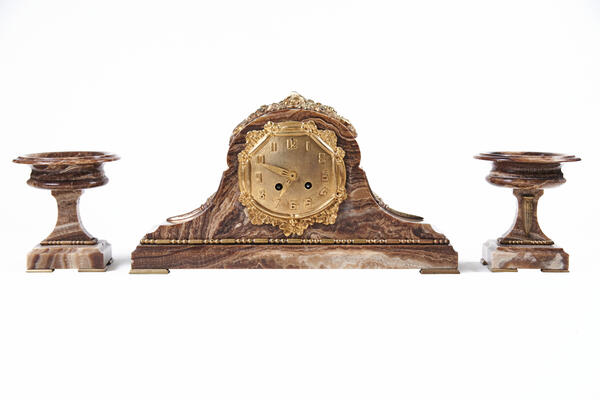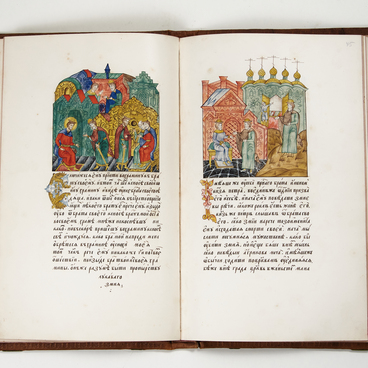The history of a mantel clock dates back several centuries. The first examples were created in the 16th century, the earliest surviving ones date back to 1549. Only kings and high-ranking nobles could afford it at that time. In the late 17th — early 18th century clocks became more widely spread. At that time, the fireplace was the most important element of the interior. Noble representatives decorated it with candelabra with candles, china figurines, patterned jewel boxes, and, of course, splendid clocks.
The museum collection houses a clock in the form of ‘Napoleon’s Hat’. It was created in the first half of the 19th century and quickly gained popularity. The minds of most contemporaries of the great French emperor were enchanted by the ‘Napoleonic Idea’ associated with the role of an individual in history. Interior art reflected this idea as well, in particular in the form of mantel and statuary clocks.
The clocks in the form of cocked hats served as a kind of reminder for their owners. Those clocks symbolized the transience of terrestrial glory and the relentless course of history that puts everything in place despite all human efforts. The earlier versions had a figure of Napoleon riding a horse. However, in the modern version, there is only Napoleon’s cocked hat left.
It is also interesting that the famous Napoleon hat was the emperor’s invention. In reality, French soldiers did not wear such cocked hats, so Napoleon wore the hat to stand out from others on the battlefield. There were several hundred hats in his collection. Not many of them survived to this day, so collectors have to put a lot of effort into finding one. The emperor wore his hat during the Battle of Borodino, and in it he left the Russian capital in October 1812.
The clock from the museum collection is made of onyx marble and bronze. The mechanism is built in a big artistically decorated cabinet. Such ornate examples were not always used for their intended purpose, more often they were considered pieces of art.
Clocks were adorned with gilded bronze figures, ornaments made of tin, brass, silver, and turtle shell. Figures of satyrs and cupids were often used as decorative elements. The clock cabinet was mainly made from wood and then covered with bronze.
The museum collection houses a clock in the form of ‘Napoleon’s Hat’. It was created in the first half of the 19th century and quickly gained popularity. The minds of most contemporaries of the great French emperor were enchanted by the ‘Napoleonic Idea’ associated with the role of an individual in history. Interior art reflected this idea as well, in particular in the form of mantel and statuary clocks.
The clocks in the form of cocked hats served as a kind of reminder for their owners. Those clocks symbolized the transience of terrestrial glory and the relentless course of history that puts everything in place despite all human efforts. The earlier versions had a figure of Napoleon riding a horse. However, in the modern version, there is only Napoleon’s cocked hat left.
It is also interesting that the famous Napoleon hat was the emperor’s invention. In reality, French soldiers did not wear such cocked hats, so Napoleon wore the hat to stand out from others on the battlefield. There were several hundred hats in his collection. Not many of them survived to this day, so collectors have to put a lot of effort into finding one. The emperor wore his hat during the Battle of Borodino, and in it he left the Russian capital in October 1812.
The clock from the museum collection is made of onyx marble and bronze. The mechanism is built in a big artistically decorated cabinet. Such ornate examples were not always used for their intended purpose, more often they were considered pieces of art.
Clocks were adorned with gilded bronze figures, ornaments made of tin, brass, silver, and turtle shell. Figures of satyrs and cupids were often used as decorative elements. The clock cabinet was mainly made from wood and then covered with bronze.



